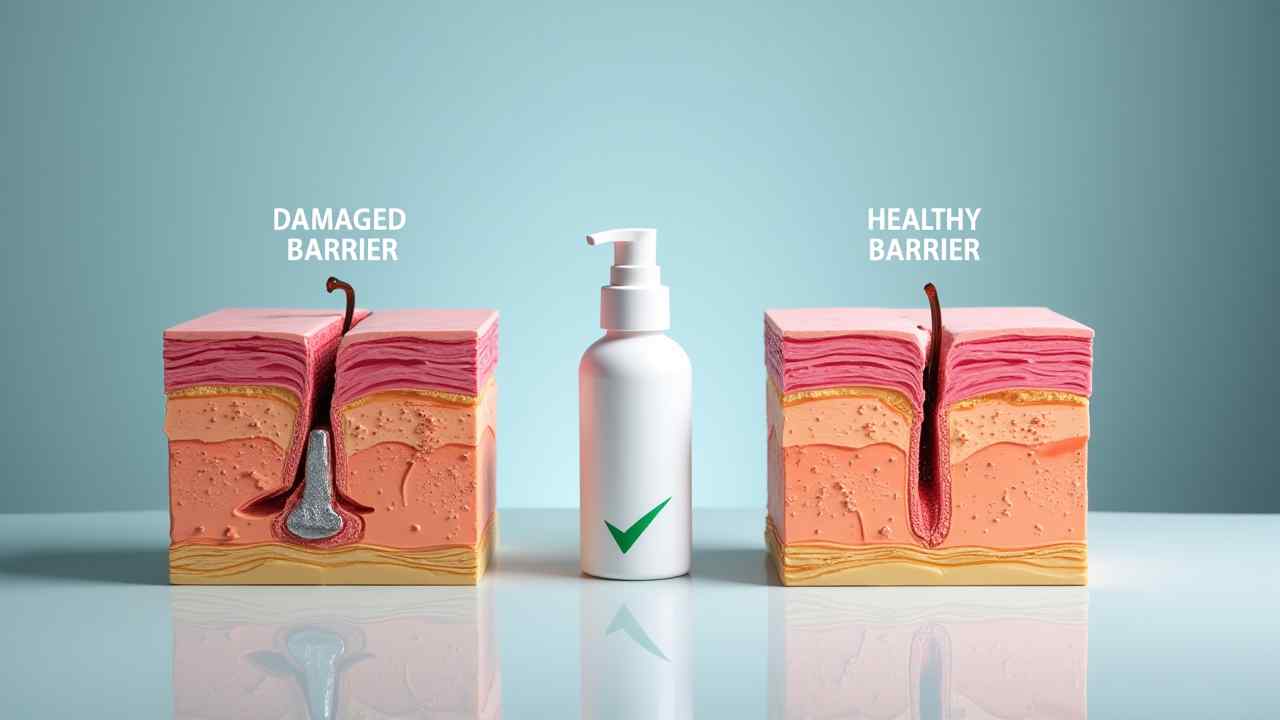
🩹 How to Repair a Damaged Skin Barrier (A Dermatologist's Guide)
🧱 How to Repair a Damaged Skin Barrier (Your Guide to Healthy Skin) 🧱
You may have heard the term "skin barrier" a lot in the world of skincare. But what is it, and how do you know if yours is damaged? If your skin is suddenly feeling red, tight, dry, itchy, or sensitive, you are likely dealing with a compromised skin barrier.
Your skin barrier is the outermost layer of your skin. It is like a brick wall. The skin cells are the bricks, and the lipids (fats like ceramides) are the mortar holding them together. Its job is to keep moisture in and irritants out. When this wall has cracks in it, your skin becomes vulnerable.
The good news is, you can fix it. Learning how to repair a damaged skin barrier is about going back to basics. It is a simple and gentle process. This is especially important as the cool, dry autumn air here in Bursa can make a weak barrier even worse. 🍂
🤔 What Causes a Damaged Skin Barrier?
A damaged barrier is a very common problem. It is usually a self-inflicted issue. It is often caused by being too aggressive with our skincare routines. The main culprits are:
- Over-Exfoliation: This is the number one cause. Using too many harsh exfoliating acids (like AHAs and BHAs) or physical scrubs too often can strip away the protective lipid layer of your skin.
- Harsh Cleansers: Using cleansers that are too stripping and leave your skin feeling "squeaky clean" can also damage the barrier.
- Not Moisturizing Enough: If you are not replenishing your skin with the right lipids, the barrier will weaken over time.
- Environmental Factors: Sun exposure, wind, and cold, dry air can all weaken your skin's defenses.
- What is the 3-Step "Back to Basics" Repair Plan?
The solution to how to repair a damaged skin barrier is to adopt a very simple, gentle, and boring routine. It is a "less is more" approach. The goal is to stop all irritation and to give your skin the ingredients it needs to rebuild itself.
Step 1: Stop All "Active" Ingredients.
This is the most crucial first step. You must immediately stop using all of your strong, active ingredients. This means no retinoids (retinol), no exfoliating acids, and no Vitamin C serums. Your skin is injured. You need to treat it gently.
Step 2: Switch to a Gentle, Hydrating Cleanser.
Put away any foaming or acne-fighting cleansers. Choose a cleanser that is milky, creamy, or a gentle gel. It should be pH-balanced and fragrance-free. Your skin should feel soft and comfortable after washing, never tight or stripped.
Step 3: Use a Barrier-Repairing Moisturizer.
This is the healing step. Your moisturizer should be packed with ingredients that mimic your skin's natural barrier. This is the key to how to repair a damaged skin barrier. Look for these ingredients on the label:
- Ceramides: This is the #1 most important ingredient. Ceramides are the primary lipids that make up your skin's "mortar."
- Cholesterol and Fatty Acids: These are other lipids that are essential for a healthy barrier.
- Niacinamide: A great supporting ingredient. It helps your skin to produce its own ceramides.
- Soothing Ingredients: Look for ingredients that calm redness and inflammation. These include panthenol, centella asiatica (cica), and colloidal oatmeal.
⏳ How Long Does It Take to Repair the Barrier?
The timeline depends on the extent of the damage. You might start to feel relief from the tightness and stinging in just a few days. However, to fully rebuild a compromised barrier, it can take anywhere from 2 to 6 weeks of a consistent, gentle routine.
Be patient with your skin. Give it the time and the gentle care it needs to heal. Once your skin feels calm, strong, and healthy again, you can slowly and carefully reintroduce your active ingredients, one at a time. ✨